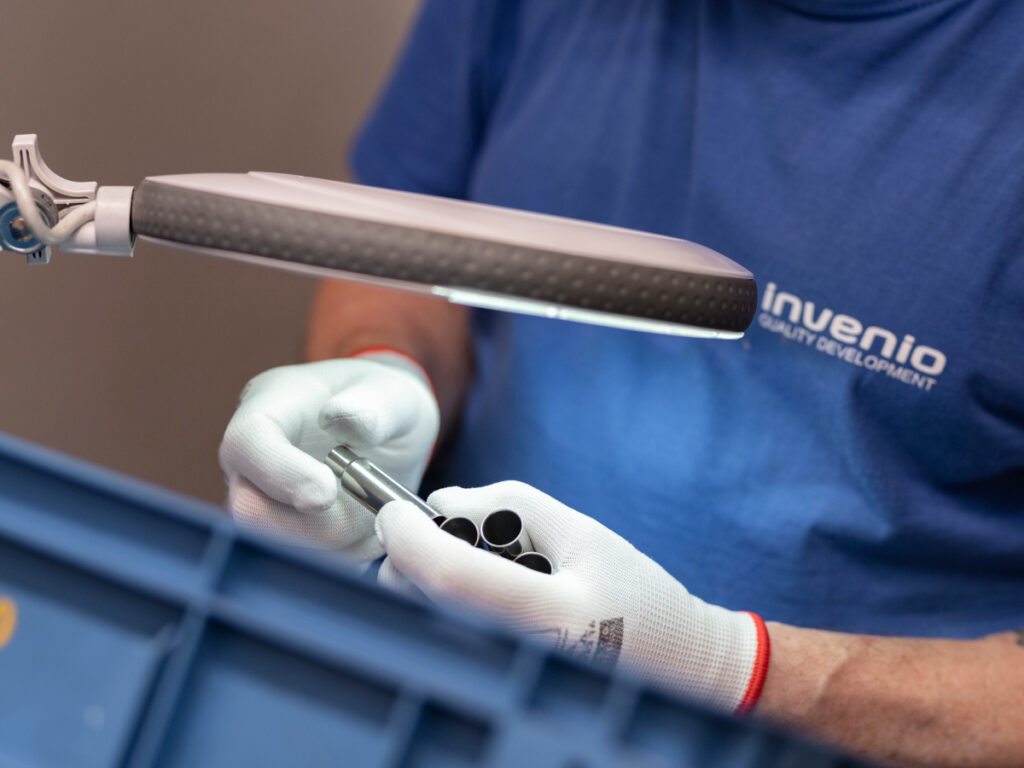I’d like to tell you about another process in the automotive industry that ensures that our cars are safe, reliable, and of top quality, namely sample inspection. This method consists in random sampling of production units to check the quality of an entire batch of products. Why is it so important? Here are three examples that will show you how sample control works and why is it essential.
Example 1: Checking the quality of brake systems
Imagine that you are a manufacturer of brake systems. Every day, your factory produces thousands of brake discs and pads that will be installed in various car models worldwide. You can’t test every component, as that would take too long and cost a fortune. So, what do you do? Pick randomly selected items for testing.
Inspecting the samples involves carefully checking these selected components for various parameters, such as braking performance, material durability, heat resistance and wear. If the test results are compliant with the requirements, you can be sure that the entire batch of brake systems is of good quality. If, however, any problems arise, their source can be quickly identified and corrective action can be taken.
Example 2: Testing of electronic components
The electronics in modern cars are complex systems that must work flawlessly. Sample control is extremely important here. Let’s say you produce electronic kits for air conditioning control. Each set must work perfectly to ensure driving comfort in all conditions.
You take randomly selected components for testing and check their performance in various circumstances: high and low temperatures, humidity, vibration, etc. By doing so, you can make sure that the systems work reliably in all conditions. If you find defects, you can fix them before the whole batch reaches the customers.
Example 3: Upholstery quality control
Let’s not forget the interior of the car, which must also meet the highest standards. You produce leather upholstery for luxury cars. Any piece of leather must be free of defects, soft to the touch and durable. Again, you can’t check every piece, but you can take samples.
Leather samples are carefully checked for quality, flexibility, wear resistance and appearance. This ensures that the upholstery in your cars will remain beautiful and durable for years to come. Problems detected at this stage can be quickly resolved before they affect the entire production process.
Why is sample control so important?
Sample inspection not only saves time and money, but above all guarantees quality and safety. With this method, we can:
– Manage risk: we detect and eliminate product defects before the items reach customers, which minimises the risk of complaints and returns.
– Save costs: sample testing is more cost-effective than full inspection of each part, which is particularly important in mass production.
– Maintain high quality: regular sample inspections make it possible to monitor production quality and make necessary improvements, leading to an overall improvement in product quality.
Our role in sample control
At invenio, we have the experience, knowledge, and technology to support our customers in quality control. We use appropriate methods and tools, which ensures precise and reliable results. Our teams boast extensive knowledge and experience, which allows us to effectively identify and eliminate potential manufacturing defects.
I hope these examples demonstrate the importance of sample inspection in the automotive industry and the role it plays in ensuring the highest quality of your cars and beyond.


